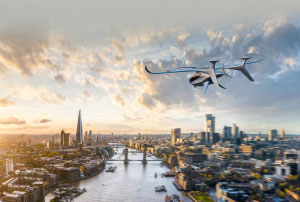


AutoFlight announced the successful completion of the proof-of-concept, transition test flight for its air taxi Prosperity I on 17 February 2022, in which the aircraft switches from a vertical take-off motion to the more energy-efficient, horizontal flight and back to vertical flight, before landing. The successful transition test flight was achieved in January 2022. The unmanned flight took place at Autoflight flight test area in JiangSu province, China with CEO Tian Yu, the R&D team and 40 AutoFlight staff present, and Prosperity I rose to an altitude of 150 meters at speeds of up to 123 mph.
Prosperity I was designed for short transfers between parts of a city, airport commutes, connecting two nearby cities or enabling trips to the countryside while avoiding traffic on the ground. When ready for commercial flight in 2025, it is expected that a trip that takes hours by car will be reduced to about 10 minutes with Prosperity I, without being any less safe or more expensive than a car taxi ride.
A ‘transition’ is when an aircraft moves from a vertical to horizontal motion and is one of the most challenging parts of an eVTOL flight. Vertical flight for the proof of concept for Prosperity I required eight rotors to lift the 3,307 pounds, including four-person, state-of-the-art electric aircraft into the air. Once the aircraft reached an altitude of 150 meters and the airspeed of 100-110mph the fixed wing part of the eVTOL generated lift.
At this point, Prosperity I entered the complex transition phase – the rotors on the top stopped spinning and locked in a streamlined position, while the propellers on the rear pushed the aircraft forward like a traditional fixed wing plane. As shown in the video, the transitions for the Prosperity I are seamless, safe and smooth thanks to the quality of the engineering and the rigorous attention to detail in the complex aerodynamics.